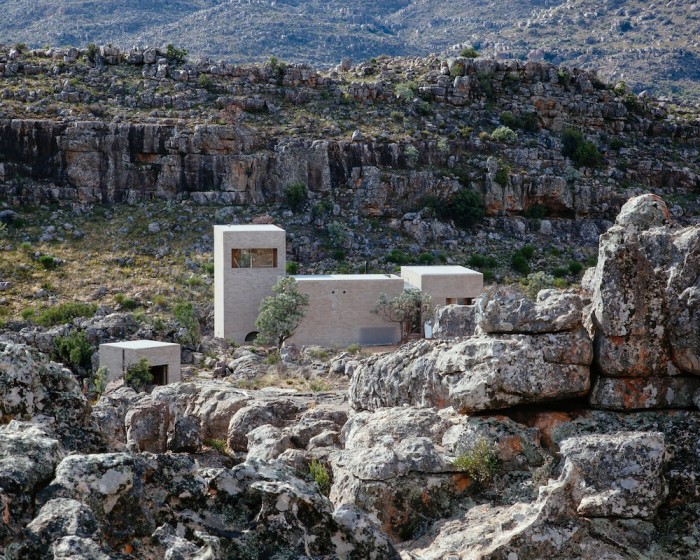
"Has national identity been sacrificed to modernity?" This is the question Rem Koolhaas, curator of the 2014 Venice Architecture Biennale, charged all 65 participating countries to consider in their exhibitions at the event, which opened on 7 June. Like many other countries recovering from a past of political oppression, South Africa has wrestled with the notion of national identity in its architecture - whether it was imposed to exclude and divide during Apartheid or to unite and project a positive new national image under democracy.
In this opinion piece, South African architect Heinrich Wolff considers the implications of building a cultural and national identity through architecture. He argues that charging architects to deliver a predetermined, homogenous identity in their designs is an act of bad creative faith. Here are his thoughts:
In South Africa, where I am from, questions around the issue of cultural identity are often asked. In the face of political freedom, particularly freedom from political systems that did so much to destroy indigenous culture, one can understand the need to question who we are now (or who we have become).
I would like to argue the case against the wilful construction of a (national) cultural identity. I write as an architect about these issues, but many of the points raised apply equally to urban designers and even artists.
Let’s consider the question from a position characterised as that of the architect (urbanist, artist). If an idea of cultural identity were to precede the creative act with the expectation that this cultural identity would be legible in the final product, the concept begins to mean something different. Legibility in this case would mean that the interrelatedpractices are still reasonably intact and that the group of people claiming ownership will also claim the new project as part of their identity. Let's assume for the moment that this is possible. It would then mean that opinions about cultural identity would precede the creative acts that bring the built environment into being.
Something from nothing?
If we consider the situation of a place where people are keen to construct a cultural identity, it would mean that the creative act is preceded by something.... that does not exist. The surrogate for an existing cultural identity will then be an imagined one, without any existing basis or claimants. Such an imagined cultural identity would be brought about by creative work in itself. Therefore, the construction of a cultural identity through architectural work would be an act of pure creativity. It then follows that the construction of a cultural identity in a body of architectural work is either a denial of the creativity necessary to construct it or a pretence that the invention that actually took place, never happened. The denial or the negation of the creative work that underpins the wilful construction of a cultural identity requires the architect to design in bad faith.
I would therefore argue that the construction of a cultural identity should not have any relevance in the world of the imagination and the work that flows from it. In Barnett Newman’s terms, an idea of what a cultural identity should be should have as much relevance to the architect as ornithology has to the birds.
Cultural nationalism
In the context of the built environment, it is most common that the idea of constructing a cultural identity is tied to the idea of the nation. Using Benedict Anderson's definition of nation from 2006, in this context it could refer to a nation state, for example a "Tanzanian cultural identity" or to a religion, for example a "Muslim cultural identity". In the context of the built environment, notions of the nation related to language would be less common.
The idea of defining cultural identity at the scale of the nation state is a problematic one in my view. Firstly, in a post-colonial context, national borders are commonly very recent delineations that often contain great ethnic diversity and many different cultural practices. This means that the national borders often have very little correspondence with actual geographies of cultural identities. If the ethnic diversity is not unified by a common religion or language, shared cultural values at a national scale are less likely. National cultural identities often rely on what Max Weber called the myth of common descent or a denial of its objective modernity in favour of an imagined antiquity.
Secondly, the cosmopolitan populations of major cities would bring with them different cultural identities, which would not easily be accommodated under a single national identity.
I would argue that attempts to construct a cultural identity fail to recognise that nations, regions, cities, groups or individuals never have a single coherent cultural identity. They are made up of composite cultural identifiers, such as geography, climate, history, language, religion, gender, race, ethnicity, sexual orientation, sport, etc. The denial of diversity or hybridity can manifest in exclusionary practices such as discrimination and xenophobia.
The urgent need for political unity in many countries that suffer from ethnic, religious or racial conflict does not require the projection of an imagined cultural unity. Political unity within a constitutional democracy should accommodate and encourage the cultural diversity of its citizens. Within the context of national conflict, the state may very well be circumspect about the way it represents itself in public architecture. Such was the case when Nehru opted for Modern architecture as the preferred expression for the new capital buildings in Chandigarh. Modernism was seen as representing a neutral middle ground between conflicting Hindus and Muslims.
I would argue that the failure of architects to recognise the nature of the society that we are in service of cannot be justifiable grounds for the development of creative work.
I would also argue that we should find connections to contemporary culture that will prevent our architecture from being adrift in a present without depth. For me, the grounding for this pursuit is found in research into contemporary culture.
The cultural consequences of colonial experiences and social divisions lend an urgency to the question of how local characteristics should find a place in the creation of a piece of architecture. An authentic architecture must be rooted intellectually and experientially in the world in which it is located physically.
I would not like to theorise how architects should incorporate the past in a vision of the future. I think that would be to limit the possibilities of the imagination.
The nation state and its agenda can certainly be an informant in design, but so also can the climate, the region, religion, the city, the neighbourhood, history and individual author. Depending on the nature of the project, the scale of influence will differ.
The ability of architects to re-imagine the existing and to invent the new is as important in the construction of a cultural legacy as ornithology is to ornithologists.
This is an abridged version of a paper first presented at the international symposium 'Global City - Local Identity,' hosted by AAT (Architectural Association of Tanzania) in Dar es Salaam, Tanzania.
For the full paper click here.






